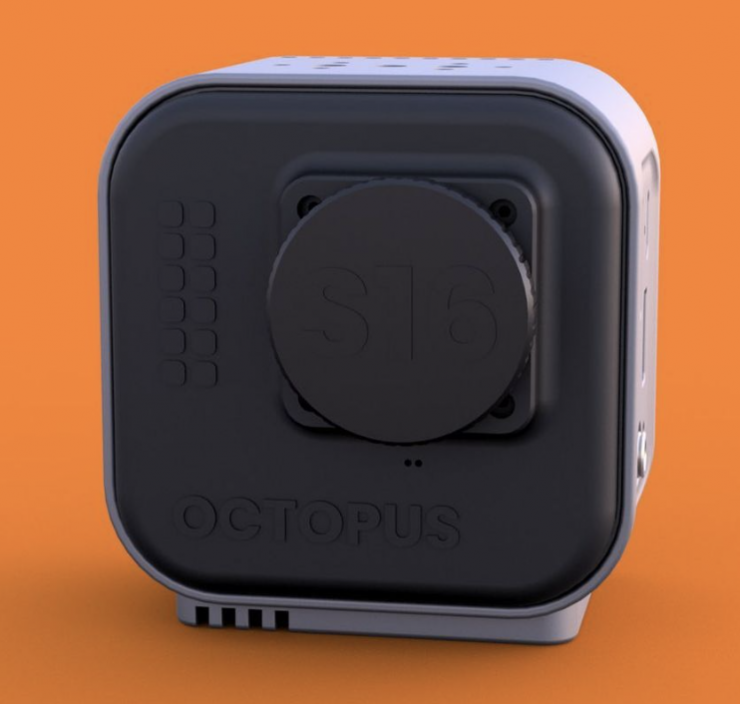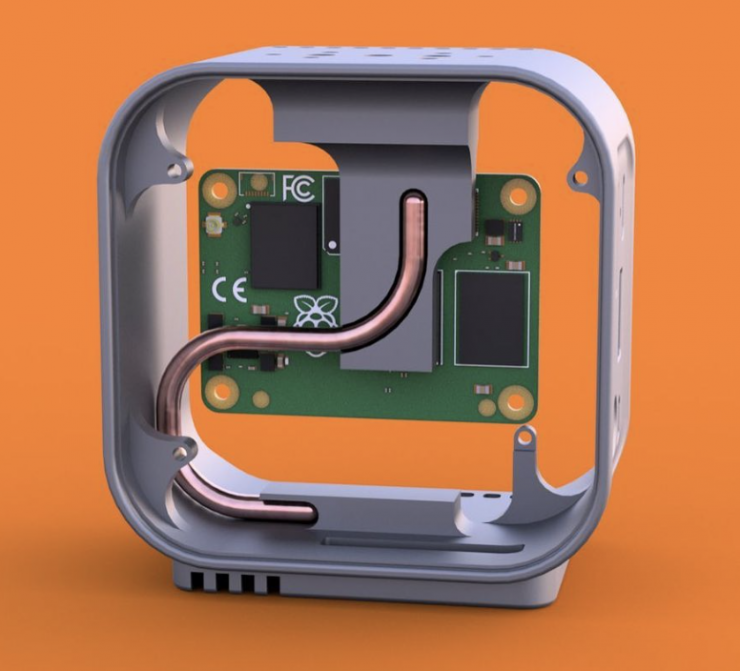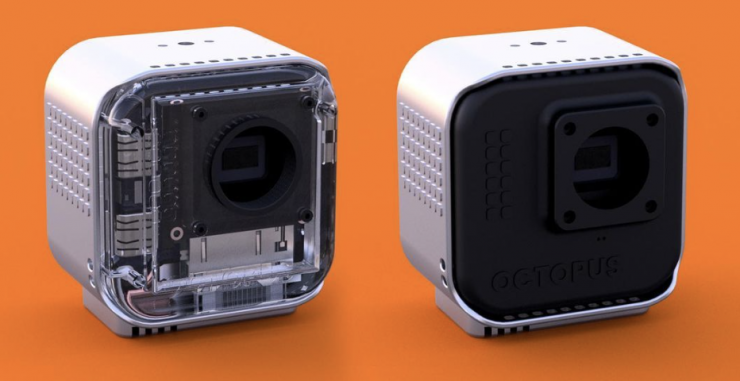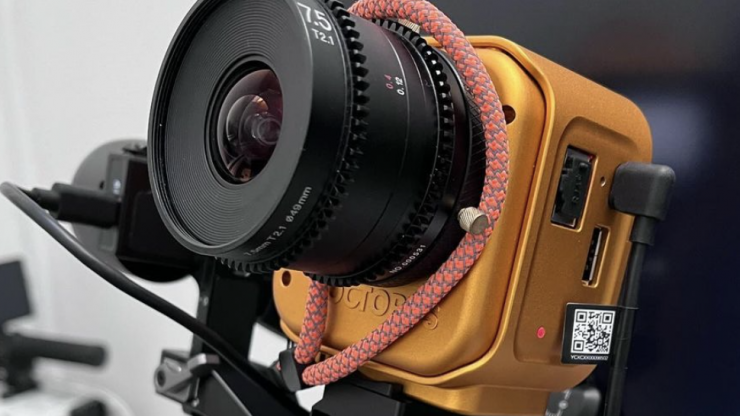
OCTOPUS CINEMA has teased a new upcoming Pocket Sized Super 16 Cinema Camera called the OCTOPUS16, which is being touted as costing under $1,000 USD. Before you get too excited this camera is still in prototype stage, but the company has been working on it for quite a while.
There are very few details currently available about the camera art from specifications, but what we do know is that it will have physical dimensions of 80 x 80 x 50mm / 3.14 x 3.14 x 1.96″ and weigh less than 400g / 0.88 lb. There is not that much footage to gauge the quality of the camera, but the few short clips that have been published should at least give you some idea of what to expect.
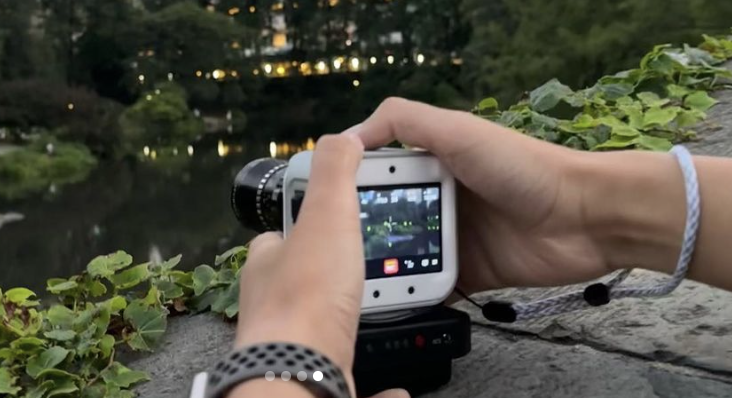
The camera is very small and it features a built-in LCD screen with touchscreen controls. It has an interchangeable lens mount that also supports MFT lenses with the use of an adapter, but the native mount is a CS-mount so you can use very readily available and affordable small sized lenses. Currently the camera needs be powered via a USB-C power bank, but eventually the plan is to have a dedicated Sony NP-F battery plate.
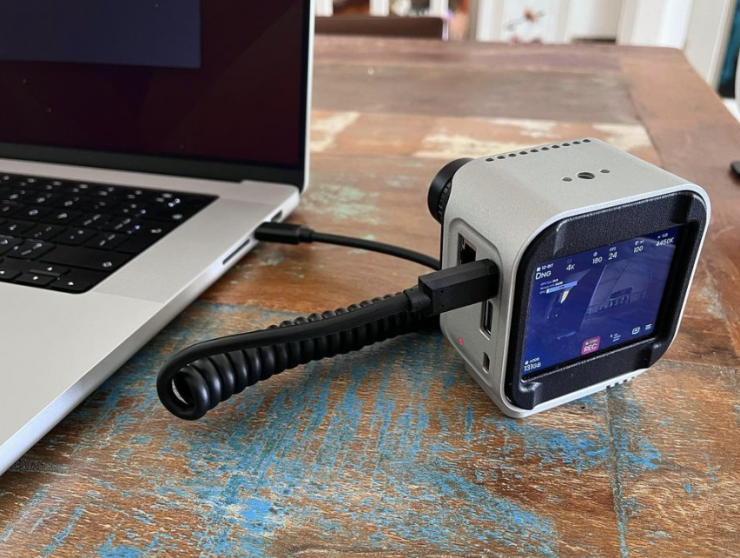
It can record internally to a CFexpress Type B card, and it will eventually also be able to output a signal over HDMI. It has either a Thunderbolt or USB-C output so you can offload directly to a computer.
The OCTOPUS16 will have a true 16-bit sensor readout and it will be capable of recording internally in 4K RAW (CDNG). They have managed to overclock a Raspberry Pi Compute Module 4 to handle 12-bit 4K RAW with liquid heat pipes for silent efficient cooling.
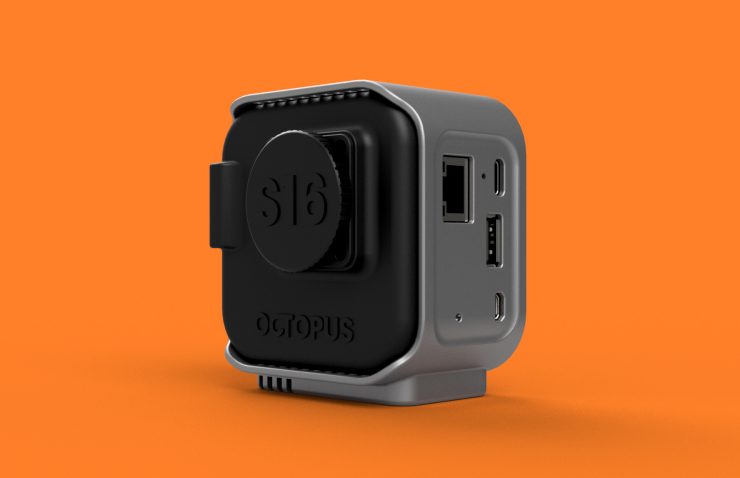
OCTOPUS CINEMA wants to avoid over-promising an availability timeframe, but they are confident they will deliver the camera within a relevant timeframe for the feature set and price point. They will, however, maintain regular progress updates and detail remaining work for the final product.
Prototype unit specifications & implemented features
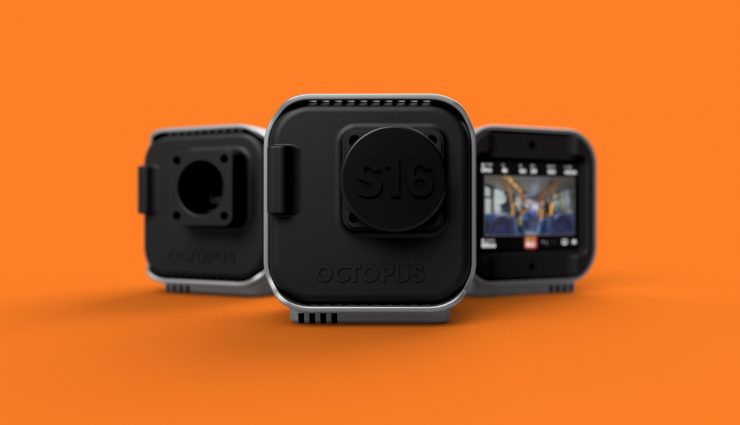
• Super 16mm format UHD-4K CMOS sensor: 3856 x 2180 at 2.9µm pixel pitch
• Dual gain sensor architecture with 16-bit readout mode for groundbreaking dynamic range and latitude at this price point
• Internal 4K logarithmically-encoded 12-bit CinemaDNG recording to CFexpress type B cards – prototype bandwidth maxes out at 24fps 4K or 300MB/sec (higher frame rates may be possible – TBC)
• Internal binned no-crop 1080p CinemaDNG recording up to 90 fps
• Interchangeable lens mount with native CS-mount thread (CS flange distance of 12.526mm supports Micro Four Thirds adapters)
• Prototype unit measures 8 x 8 x 5cm built from aluminium frame
• Open architecture Raspberry Pi Compute Module 4 embedded processor (Has integrated WiFi/Bluetooth)
• Integrated 2.8″ Rec709 calibrated 285 ppi display running at 72Hz (Precise 24fps monitoring with smooth 72fps user interface)
• Modern smartphone-like capacitive touchscreen operating software
• Extremely low power draw – just 5 watts even while recording RAW at 300MBytes/sec. (A 25W/h NP-F battery powers the camera for ~5 hours)
• Powered by any 5V USB-C source
• Low thermal footprint for continuous recording with silent heat dissipation through aluminium body
• USB digital audio recording with any USB audio class device
Planned final features and capabilities
• 48fps 4K slow motion to internal 8GB ram buffer (TBC)
• Full size HDMI port (max 1080p)
• 3.5mm analogue mic input and headphone jacks
• Dedicated 3.5mm LTC timecode input
• Integrated 6-axis IMU for stabilisation metadata
• Integrated NP-F battery plate
• Locking USB-C power input
• Dimensions similar to prototype, possibly wider but less depth to accommodate battery plate
Above you can see some test footage from a prototype of the OCTOPUS16 that was filmed late last year.
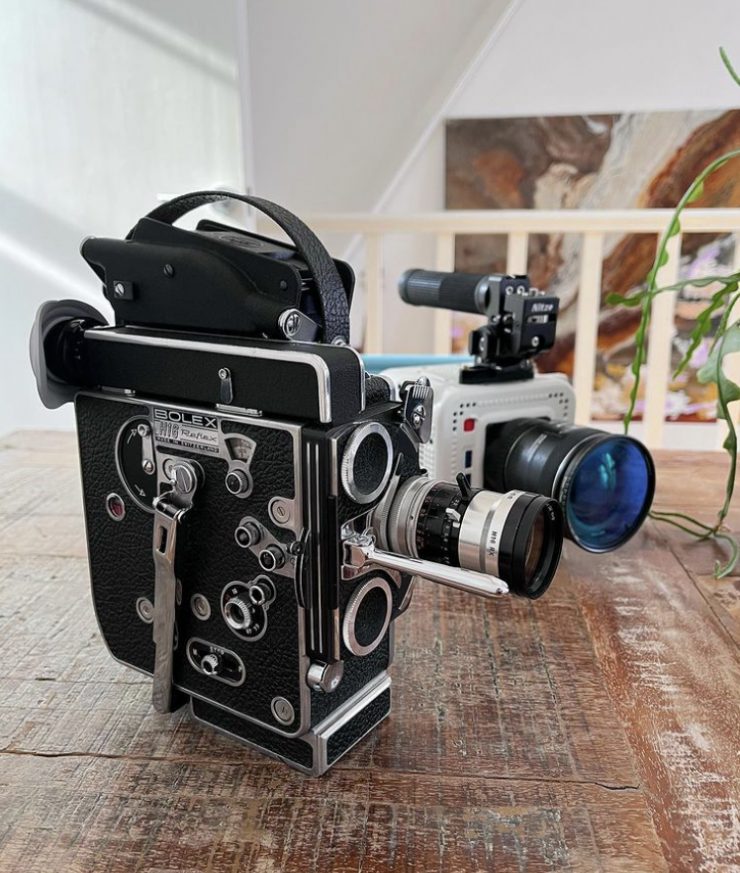
Way back in May 2022, OCTOPUS CINEMA hinted that a S16 camera could be in the works by stating, “Aquatinting with great tools of the past is an important step in building great tools for the future.”
Why a Super 16 cinema camera?
OCTOPUS CINEMA believes that the Super 16 format is a unique story telling tool with a rich heritage. In additional to its specific look, it has several benefits including affordability and a low physical footprint for a more intimate shooting style. Simply cropping to Super 16 on a high end Super 35 or large format camera misses these key points. Additionally, most Super 16 crop modes result in sub 4K resolutions – an issue if delivery mandates 4K.
Super 16 for the modern digital cinema era is underserved with almost all professional video and cinema cameras developed for Super 35 and full frame formats. With state-of-the-art CMOS technology, sensor sizes as small as Super16 no longer need compromise on sensitivity or latitude.
Even though Super 16 is still fairly niche and I think the OCTOPUS16 has the potential to be very successful, particularly if they can get it to market for under $1,000 USD.
Now, if you are not familiar with OCTOPUS CINEMA, they have been around for quite a few years now will the sole intent of making open platform cameras that feature removable and upgradable parts. Back in June 2019 I first reported about the company.
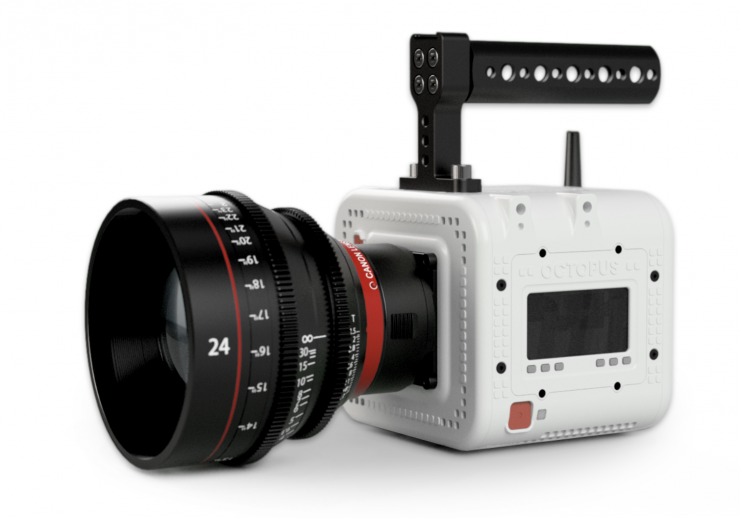
The company has been working on quite a few cameras, including the OCTOPUSCAMERA 8K LF. The large sensor camera market is a difficult one to break into so it is no real surprise that OCTOPUS CINEMA has pivoted in other direction.
That camera featured a 7920 x 6004 (47.5 Megapixels), 36.4 x 27.6mm (Diagonal 45mm) Global Shutter sensor and it can record:
- 30FPS in 4:3 (7920 x 6004)
- 40FPS in 16:9 (7920 x 4448)
- 48FPS in 2.4:1 (7920 x 3300)
The recordings can be done in camera as compressed 8K 12-bit RAW or
externally in lossless 8K 12-bit RAW or 4K 14-bit RAW to a Thunderbolt SSD.
This camera hasn’t gotten to market and it will be interesting to see if it ever does.
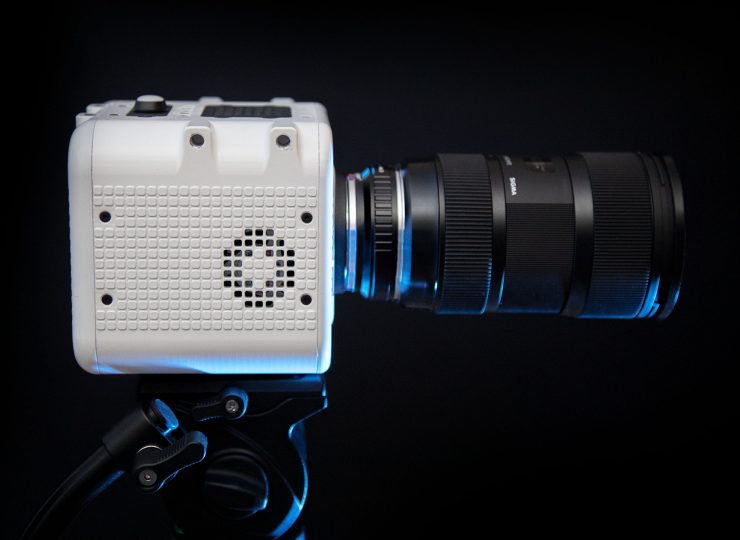
Back in 2019, Octopus Cinema was working on two different versions of the OCTOPUS CAMERA. One was going to utilize a 5K full frame sensor, and the other a 4/3″ 4K sensor.
Below you can read about the concept behind those cameras which will give you a better understanding of the company and what hey are trying to achieve. You can also read an interview I did back in 2019 with Russell Newman, the Lead Engineer/Founder of Octopus Cinema.
Unlike a lot of digital cinema cameras, the OCTOPUS CAMERA is not tied to a single image sensor. Instead, the camera supports a range of image sensor modules from third-party sensor module manufacturers. At the moment the key sensor module developer is a company called XIMEA who specialize in imaging modules.
Not being tied to a particular sensor is a very interesting concept, and while most camera manufacturers are very reluctant to disclose where their sensors come from, Octopus Cinema looks to be very upfront with what sensors their cameras will use.
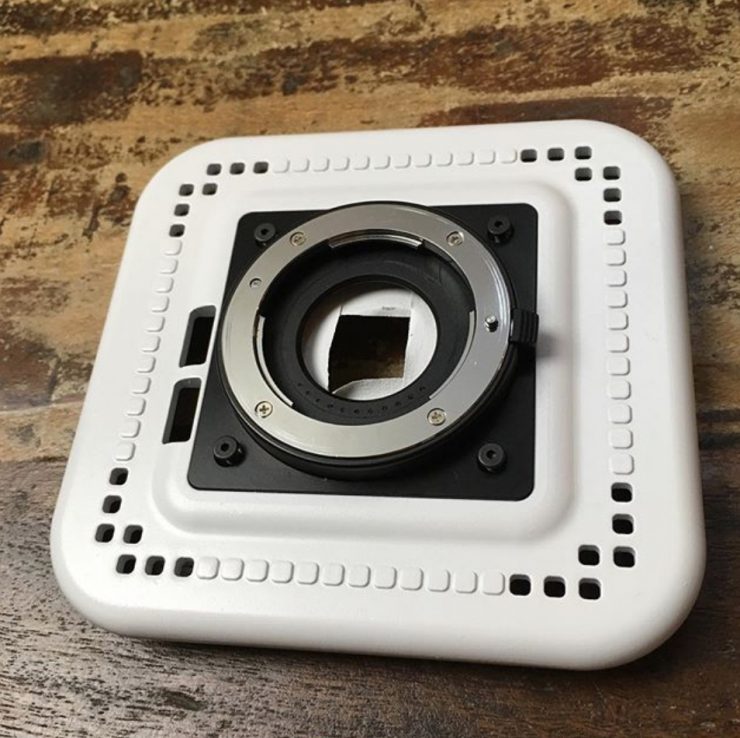
The current prototype cameras will use XIMEA’s 1.1-inch and Full Frame image sensor modules. XIMEA provide a range of high-performance imaging modules which can be interchanged allowing the OCTOPUS CAMERA to have a fully upgradable image sensor.
Specialist sensors available include specifications such as full-frame 35mm, Global Shutter, native Monochrome and more.
Out of the box, the OCTOPUS CAMERA records lossless compressed 12-bit RAW 4K into CinemaDNG format. For longer record times, the camera also records high bitrate (900Mbit) 10-bit HEVC.
All sensors are capable of full losslessly-compressed 12-bit RAW at 4K 30fps. 10-bit HEVC and lossy RAW allow for higher frame rates depending on the sensor. Additional recording formats can be added trivially with the SDK through Libavcodec or 3rd party libraries.
As far as recording media goes, the camera has SSD and CFast 2.0 options using the SATA III and USB3 ports connected to the main board.
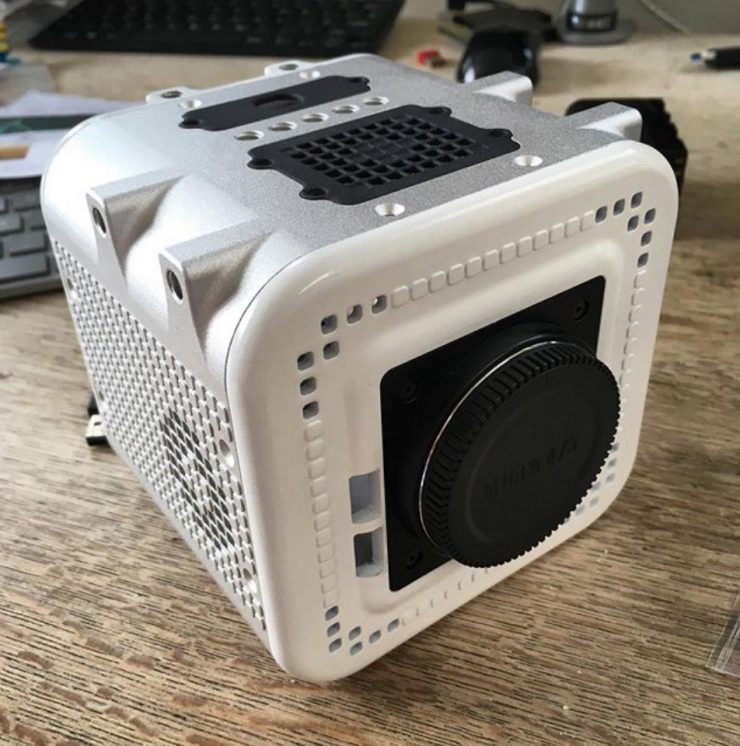
The camera measures just 110 x 110 x 110mm, and it weighs in at 900g. It is made out of CNC Milled Aluminium in a gloss white finish. It is designed and assembled in London, UK.
I reached out to Russell Newman, the Lead Engineer/Founder of Octopus Cinema to ask him some questions about the cameras.
Q. How long have you been working on the camera?
The camera has been in development in some form since the beginning of 2018.
Q. What was the inspiration behind building Octopus?
My background is in 3D graphics and software engineering, and I had always a strong interest in cinema technology – I had until recently owned almost every camera Blackmagic Design released. Blackmagic’s success and projects such as the Digital Bolex made me realize that the days of pro-quality footage being reserved for the likes of a £10k+ Sony camera would be soon gone.
Q. With so many digital cinema cameras already on the market, what makes Octopus different?
The open nature of the product I believe sets it apart from others – all the components are documented and available to upgrade or replace. Additionally, some of the image sensor characteristics/options are also hard to find from other products – namely native monochrome/IR capabilities and global shutter.
Q. What features and specifications does Octopus offer?
Recording wise, the camera records lossless 12-bit RAW 4K up to 30fps and up to 60fps with 10-bit HEVC. This is, however, a base starting point. We would like to build a community for developing additional features available in an open source environment.
For example, the HEVC encoding uses the libavcodec library which is part of the ffmpeg library. We could then add support for encoding any codecs which ffmpeg supports – providing they’re efficient and stable enough.
The sensors we’re aiming to support at the moment are 1.1-inch (4K) and Full frame (5K). Both of these are global shutter with color and monochrome variants. The dynamic range falls between 12 and 13 stops.
Will the camera have any audio capabilities and any plans for any type of modules to support SDI/Timecode etc.?
The camera body has 4 USB3 ports which we intend to use for digital audio recording and supporting new add-on modules – either third-party or developed ourselves.
We could add SDI output through a separate module connected via USB3, but for the time being the device only supports natively two HDMI2.0 outputs.
Timecode can be added through third-party products which can receive/send timecode information via USB:
http://www.ese-web.com/es71.htm
It would be our aim to support these products should it be on many peoples wish lists.
Timecode can be added through third-party products which can receive/send timecode information via USB:
http://www.ese-web.com/es71.htm
It would be our aim to support these products should it be on many peoples wish lists.
For USB audio recording, operators can choose from high-end field recorders with USB audio device support, direct USB microphones, or a low profile XLR to USB interface device such as:
https://www.amazon.co.uk/Shure-Adapter-integrated-Monitoring-Headphone-x/dp/B001PPXFAG
We believe USB audio recording to be a good solution as it defers the A/D conversion to dedicated and isolated audio hardware.
Q. When do you hope to have Octopus available to purchase?
We are looking to have the 1.1-inch model available by Q3 2020.
Who are the OCTOPUS CAMERAS aimed at?
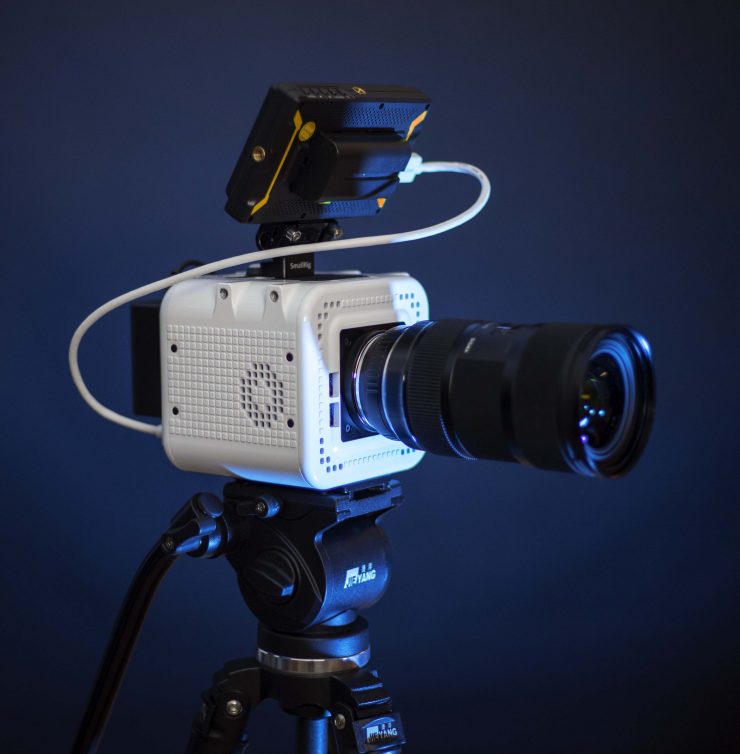
According to Octopus Cinema, with the increasing competition in the cinema camera market, the primary goal of the OCTOPUS CAMERA is to fill a gap in the market where users require a specific product for a specific application. These specific features include native monochrome sensor imaging and a fully open SDK to extend and embed custom behaviour in the camera.
The camera is not being targeted as a competitor against most other digital cinema cameras that are already on the market.

